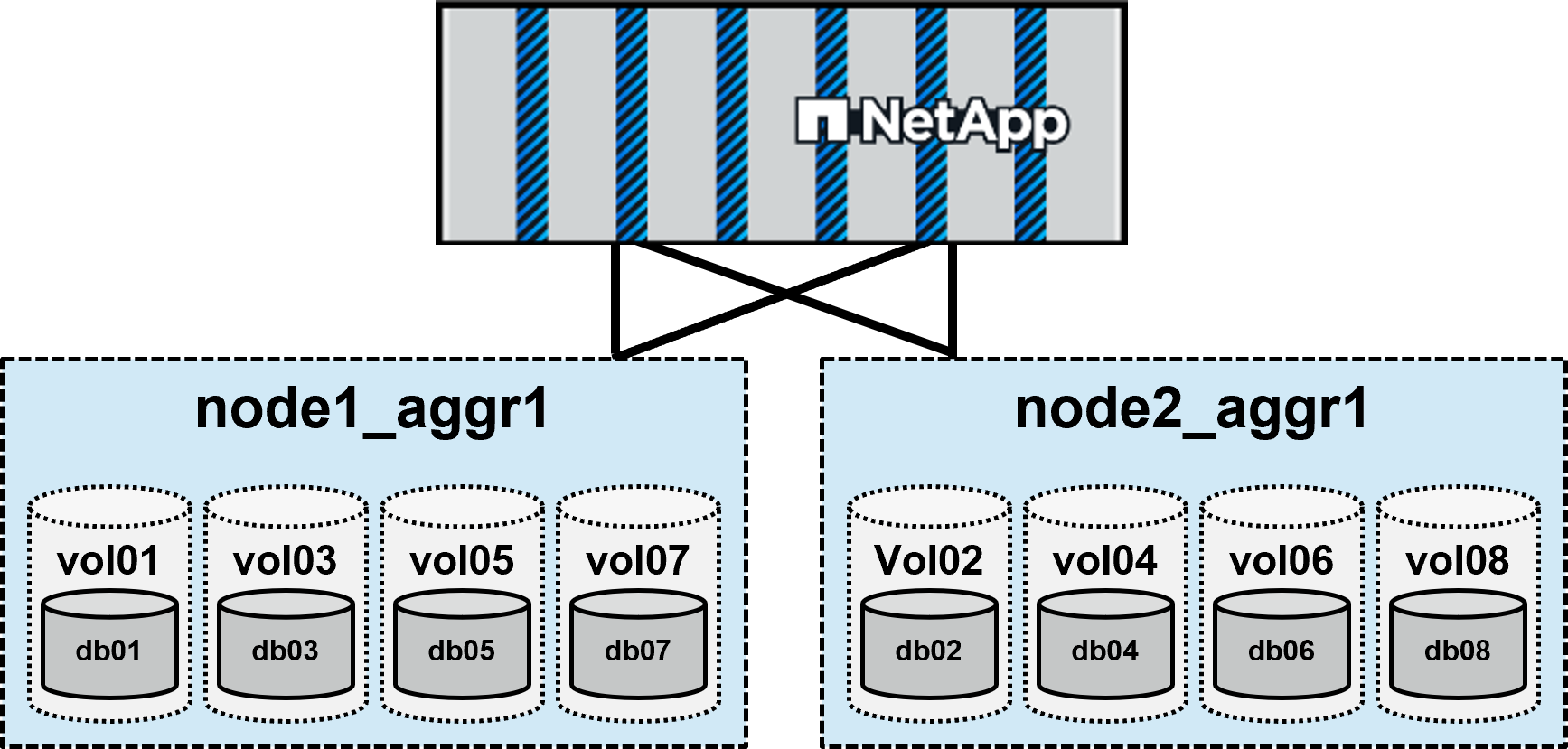Epic LUN and volume configuration
 Suggest changes
Suggest changes


The Epic Database Storage Layout Recommendations document provides guidance on the size and number of LUNs for each database.
It is important to review this document with the Epic DBA and Epic support as well as finalize the number of LUNs and LUN sizes as they might need to be adjusted. These storage recommendations are important for HBA queue depth, storage performance, ease of operations and ease of expansion.
For the server OS queue depth consideration, use a minimum of eight LUNs (one LUN per volume) for a database. Increase the number of LUNs by the number of nodes in the ONTAP cluster. For example, add 4 LUNs when using a 4 node (2 HA pair) cluster. For larger environments, more LUNs might be required; use the same number of volumes (eight total, distributed across storage node) and add LUNs in multiples of two across the cluster nodes and volumes. This approach enables you to easily scale your Epic environment.
Example 1: 2 Node ONTAP cluster
2 Node, 1 HA pair
8 Volumes, 4 volumes per node
8 LUNs, one LUN per volume
Adding an additional 2 LUNs, one on node01 in volume01, one on node02 in volume02.
Example 2: 4 Node ONTAP cluster
4 Node, 2 HA pair
8 Volumes, 2 volumes per node
8 LUNs, one LUN per volume
Adding an additional 4 LUNs, one on node01 in volume01, one on node02 in volume02, one on node03 in volume03, one on node04 in volume04.
To maximize performance for a workload, such as Epic ODB or Clarity, each layout works best also for NetApp storage. By using eight volumes, write IO is spread evenly across controllers, maximizing CPU utilization. For replication and backup, it's best to limit the number of volumes to eight to simplify operations.
Scaling options
If more storage is required by the server, the easiest option is to grow the LUNs containing volumes. The second option is to add LUNs to the volume groups in multiples of two at a time (one per volume per node).
Example:
Volume and 8-LUN layout


|
If in an large environment requiring more then 4 nodes or 8 LUNs please consult our Epic alliance team to confirm LUN designs. The team can be reached at epic@netapp.com. |
Best practices
-
Use 8 LUNs in 8 volumes to start, adding 2 LUNs at a time, across all nodes of the cluster.
-
Balance the workloads across the HA pair to maximize performance and efficiency.
-
Create LUNs at the size expected for 3 years of growth. (Consult the ONTAP documentation for maximum LUN sizes.)
-
Use thin provisioned volumes and LUNs.
-
Use a minimum of eight DB LUNs, two journal LUNs, and two app LUNs. This configuration maximizes storage performance and OS queue depth. More can be used if needed for capacity or other reasons.
-
If you do need to add LUNs to volume groups, add eight LUNs at a time.
-
Consistency Groups (CGs) are required for the group of volumes and LUNs to be backed up together.
-
Do not use QoS during the GenIO or any I/O performance.
-
After GenIO or Clarity testing, NetApp recommends deleting the storage and reprovisioning before loading production data.
-
It's important that
-space-allocationenabled is set on the LUNs. If not, any deleted data on the LUNs will not be seen by ONTAP and might cause capacity issues. For more information, see the Epic Storage Configuration Quick Reference Guide.


